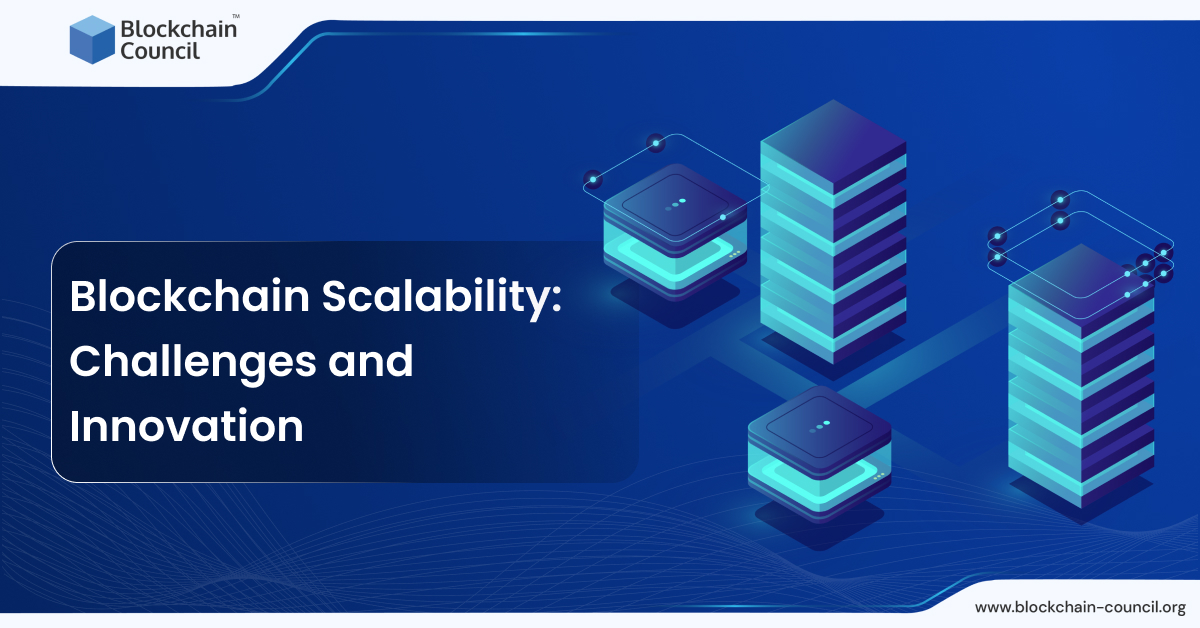
- Adeshina Ajayi
- September 13, 2024
Blockchain technology, the immutable ledger holding the promise of trust and transparency across industries, faces a critical hurdle: scalability. As dApps (decentralized applications) and smart contracts move beyond niche applications and shift towards reaching mainstream adoption, the ability to handle a torrent of transactions efficiently and sustainably becomes a non-negotiable demand. This article explains the intricacies of blockchain scalability, exploring the daunting challenges and the groundbreaking innovations propelling this transformative technology towards a future of boundless potential.
Unraveling the Bottlenecks:
At the heart of the scalability conundrum lies the consensus mechanism, the lifeblood of blockchain security. Traditional protocols like Proof-of-Work (PoW), employed by Bitcoin and early Ethereum, require every node in the network to validate every transaction, creating a computational bottleneck. This translates to glacial transaction speeds, prohibitively high fees, and an inability to cater to the burgeoning demands of real-world use cases, from supply chain management to global payments.
The Blockchain Trilemma: A Delicate Dance:
Further complicating the quest for scalability is the blockchain trilemma: a theoretical framework suggesting an inherent trade-off between decentralization, the bedrock of blockchain’s trust and security, security, the unwavering shield against malicious actors, and scalability, the ability to handle a high volume of transactions swiftly and efficiently. Enhancing one element often seems to come at the expense of the others, forcing developers and researchers to tread a delicate path of finding the optimal balance.
Innovation Blossoming in the Face of Adversity:
Despite the seemingly insurmountable challenges, the blockchain community pulsates with inventive spirit, brimming with solutions aimed at breaking through the scalability barrier. A vibrant tapestry of approaches is being woven, each offering a unique perspective on tackling the trilemma:
Layer-2 Scaling: This strategy offloads transaction processing from the main chain onto dedicated secondary networks, known as Layer-2 solutions. Sidechains and rollups, for instance, enable lightning-fast and cost-effective transactions while inheriting the security of the main chain, paving the way for dApps like decentralized exchanges and gaming platforms to flourish.
Sharding the Burden: By dividing the blockchain into smaller segments called shards, each processing transactions independently, sharding distributes the workload, dramatically boosting throughput and efficiency without compromising decentralization. Ethereum 2.0, the much-anticipated upgrade, is spearheading this revolution, promising to unlock a future of scalable smart contracts and dApps.
Consensus Mechanisms Reimagined: The quest for faster transaction validation without sacrificing security has birthed a wave of innovative consensus mechanisms. Proof-of-Stake (PoS), where validators stake their tokens to secure the network, is gaining traction due to its significantly lower energy consumption compared to PoW. Other advancements like Byzantine Fault Tolerance (BFT) protocols further explore alternative approaches to consensus, pushing the boundaries of what’s possible.
DAGs: Charting a New Course: Stepping outside the confines of the traditional block-based structure, Directed Acyclic Graphs (DAGs) offer a unique approach to transaction processing. Unlike blockchains, DAGs process transactions asynchronously, creating a graph-like network where each transaction validates others. This eliminates the need for mining and sequential blocks, potentially enabling unmatched transaction speed and scalability.
The Road to a Decentralized Horizon:
While significant progress has been made, the journey towards truly scalable blockchain solutions is an ongoing marathon. Continued research and development are crucial to refine existing solutions, explore uncharted territories, and optimize for specific use cases. From enhancing Layer-2 solutions to delving deeper into the potential of DAGs, the blockchain community remains relentlessly focused on pushing the boundaries of scalability.
Conclusion:
The quest for a scalable blockchain is not merely a technical challenge; it’s a gateway to unlocking the full potential of this transformative technology. By embracing innovation and confronting the daunting challenges head-on, the blockchain community can pave the way for a future where trust, transparency, and efficiency empower a vast array of applications across industries, from financial inclusion to healthcare and beyond. With its unwavering spirit and collaborative drive, the blockchain ecosystem is poised to scale the walls of innovation, ushering in a new era of decentralized possibilities.




































































 Guides
Guides News
News Blockchain
Blockchain Cryptocurrency
& Digital Assets
Cryptocurrency
& Digital Assets Web3
Web3 Metaverse & NFTs
Metaverse & NFTs
